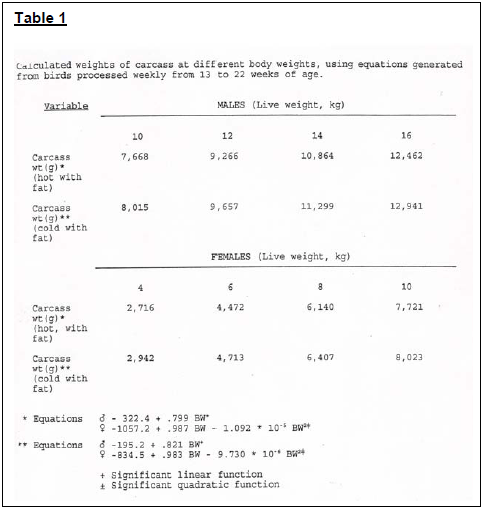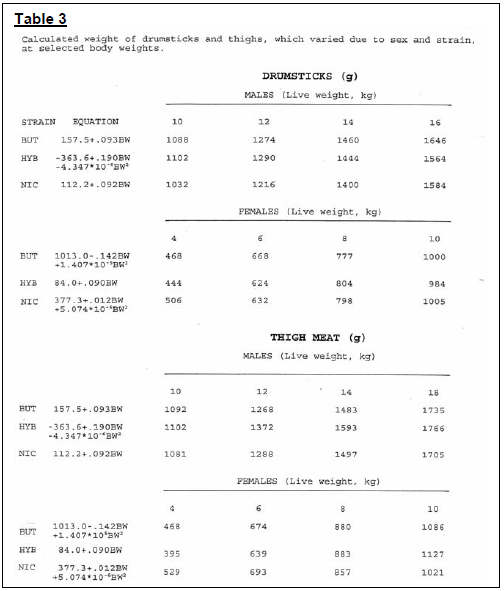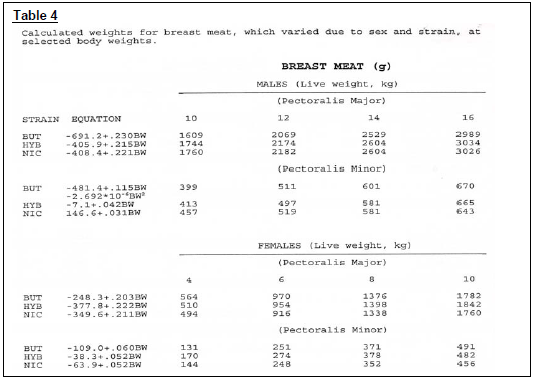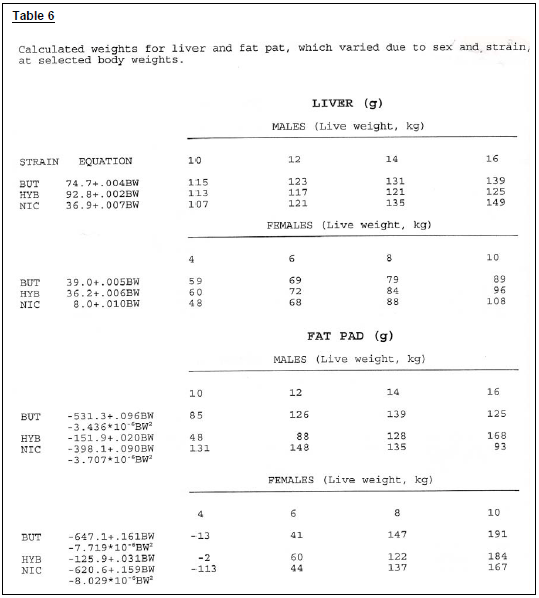



Calculating Carcass Yield of Turkeys
A paper published in Poultry Science offered some interesting equations to calculate carcass yield and offal production from different strains of turkeys. John D. Summers explains in this article in Tech Info 8 from the Canadian Poultry Industry Council.A paper that was published in Poultry Science (Brake et al 1994) provides some interesting equations that can be used to calculate carcass yield and offal production from the three major strains of turkeys on the market today, at given body weights.
The authors processed male and female birds of the British United Turkeys Big 6 (BUT), Hybrid (HYB) and Nicholas 88 (NIC), strains. A sample of 10 birds was processed every week from 13 to 22 weeks of age with a body weight ranging from 4.2 to 17.6 kg over this period of time. Data were subjected to regression analysis and equations calculated using significant linear and quadratic components for each independent carcass variable. There were variables that differed due to sex alone and strain alone while most differed due to a combination of sex and strain.
Using equations generated by the authors, weights of various carcass parts have been calculated at selected body weights. By and large only variables with relatively high correlations (R2) have been chosen. It should be pointed out that in some cases, especially with significant quadratic functions, the low and high body weights selected were extreme enough to unduly influence some of the values generated. This is particularly noticeable for the fat pad weights.
In Table 1 is shown calculated weights for carcass, at selected body weight, which differed due to sex alone. The correlation (R²) between live weight and carcass weights was very high (.98 to .99) as compared to much lower correlations for things like gizzard weight and feet plus shanks.

In Table 2 is shown calculated weights for several variables that differed due to strain alone. The two shown, heart and hind half weights, had high correlation coefficients, especially for hind half, as compared to those given for blood and feather weights.

In Table 3 weights derived for drumsticks and thigh meat, for the various strains and sexes, is shown. Again the correlations for these variables were high (for the most part above .90). Correlation coefficients were also high for breast meat yield, for the three strains of turkeys, with the exception of several for the pectoralis minor muscle. These generated weights are shown in Table 4.


Correlations for wings and neck, with live body weight, were also high for the various strains and sexes. Calculated weights, at selected body weights, are shown in Table 5.

While the weights of the various body components shown, for the three turkey breeds, are not necessarily a true picture of what may be found under field conditions where environment, health status, and feeding program employed could significantly alter bird performance, they do give reasonable values that can be used to compare yields at different body weights.

Equations used to generate the component weights are given in the tables. These can be used along with selected body weights (within the range covered by the experiment) to estimate yield from a particular flock.
For those desiring more detail, they should refer to the original manuscript.
Reference
Brake J., G.B. Havenstein, P.R. Ferket, D.V. Rives and F.G. Giesbrecht 1994, Relationship of sex, strain and body weight to carcass yield and offal production in turkeys. Poultry Science 74: 161-168.
November 2008







